
A prepared traveller is a safe traveller
Australia has some incredibly diverse, unique, and rugged landscapes that travellers both local and international are keen to explore. What many fail to fully realise, however, is that Australia is also a land full of extremes. That may seem obvious, but the precautions that need to be taken with any type of offroad experience are very different from what you’ll need to do to safely travel through the country’s deserts.
For travellers planning or even just considering driving around Australia, whether that be from one location to another or the ‘Big Lap’, safety preparations should always be the first consideration. Australia has a reputation for being the land where every animal can kill and while locals roll their eyes at the exaggerations of these rumours, we still have a healthy dose of caution around many of the country’s snakes and spiders. But it’s the harsh weather and road conditions that are far more likely to bring tragedy on your travels than any animal.
Planning for these conditions or any unexpected mishaps along the way is the best chance you can give yourself of making it through the outback safely. Preparing for any possible scenario is crucial. Everything you pack and plan to bring should be intentional and well thought out, as knowing what to use to get you through a disaster can be life-saving.
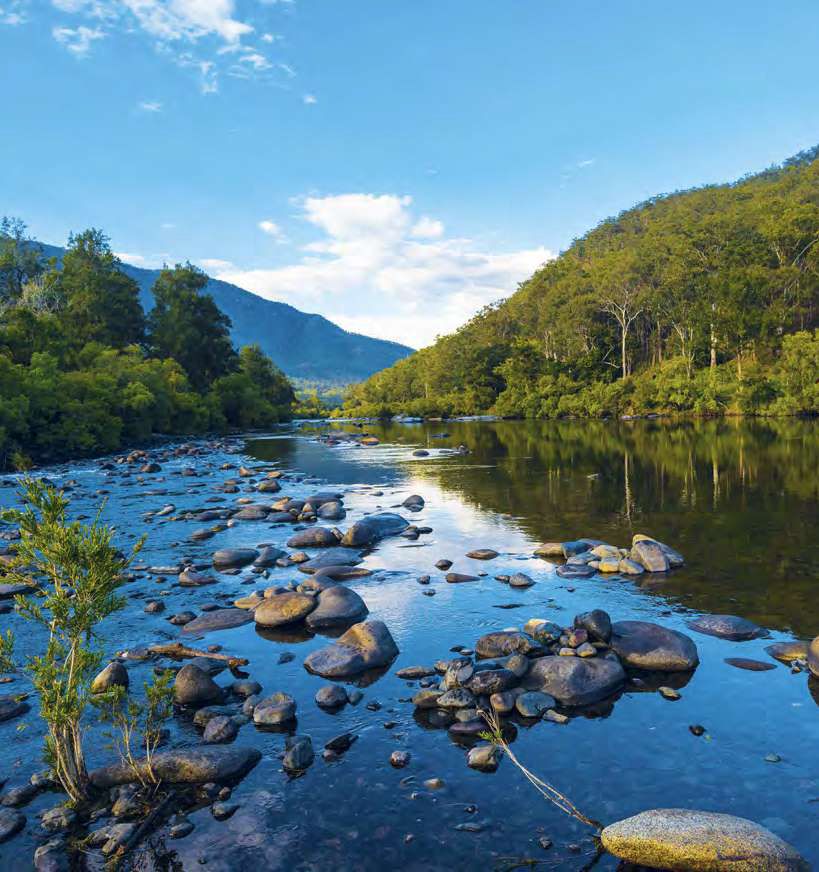
Australia has some singularly beautiful terrain
PREPARE
Any long-term traveller knows that preparation goes well beyond planning where to go and packing lists. This extends to knowing your check-in points, giving a copy of your itinerary to a family member or friend, and knowing safe detours around closure sites.
Driving long distances in the arid outback can take a toll on any driver so an important consideration is concentration, patience, and rest. It is extremely dangerous to drive while tired, particularly on monotonously long roads, so have a rough idea of how long it takes to get from one campsite or accommodation to another, and take regular breaks to keep your focus sharp. When towing a vehicle at high speeds, even the slightest unplanned movement can result in tragedy — make sure to check in with your contact at planned intervals so they know you’re safe.

Driving in desert conditions requires skill
Ensuring you have the right gear, trailer and towing vehicle is one of the most obvious but also necessary elements of safety prep, as well as knowing whether or not these all comply with current safety standards. If your vehicle has been in need of a service, make sure it’s done prior to your long trip — tell your mechanic about your plans so they can do a thorough service designed to get your vehicle through a long period of regional or outback travel.
Another important consideration to keep in mind is fuel and water. While this is largely dependent on the weight of your vehicle, it can also differ depending on the destination and length of your travels. Try to top up your fuel whenever you can.
If anything, consider carrying a few jerrycans if you plan to do heavy offroading. Heavier loads increase fuel consumption, so be mindful of what you’re taking. In relation to water, about 10 litres a day per person is enough for drinking, cooking and washing, but make sure you’re conserving it whenever possible.
Also, make sure your tyres are pumped and have sufficient tread, and carry at least one spare with you. You need to know the capabilities of what you have and how your vehicle handles in the different conditions you will be driving through.
If you need a few tips, many motoring organisations offer driving and towing courses covering offroad driving conditions and will help you get prepared for all types of terrain.
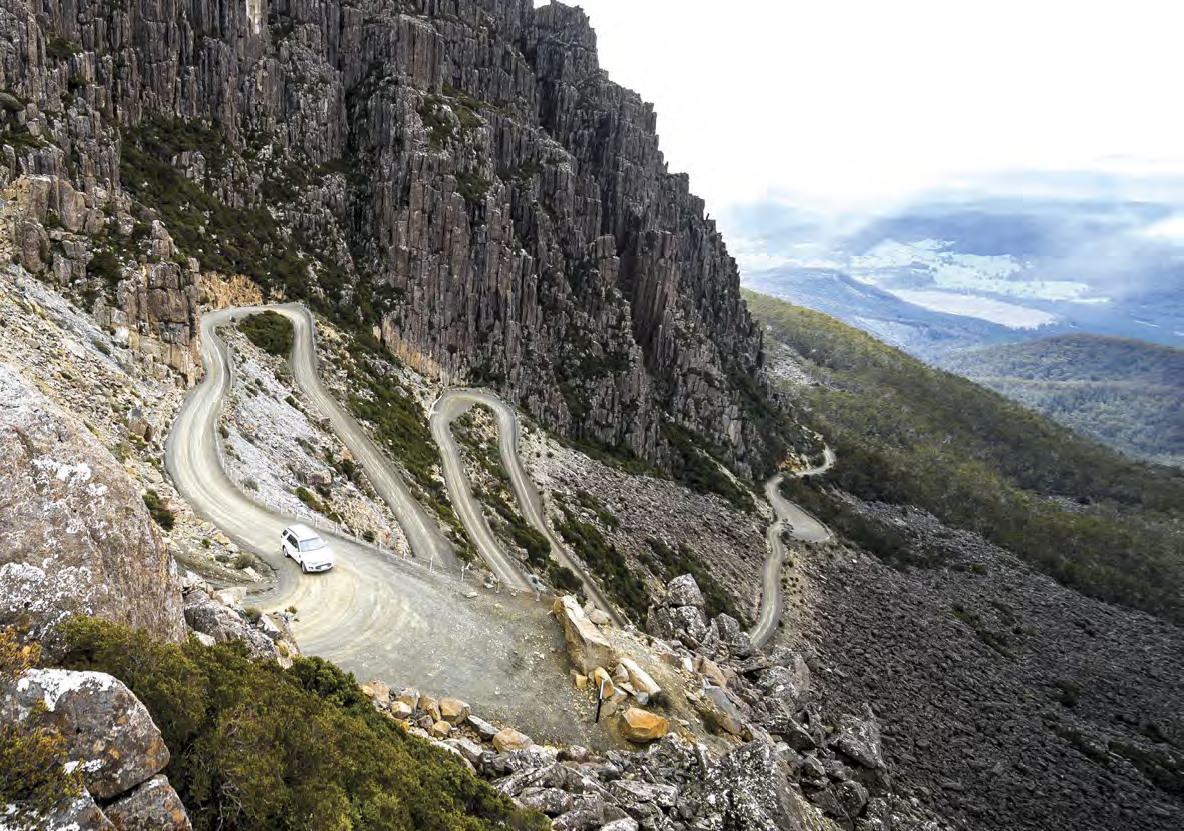
Australia is a land of extremes
BRINGING THE RIGHT STUFF
An extension of preparation is bringing the right gear, safety equipment, and supplies. First and foremost a satellite phone is an essential, given mobile coverage in Australia’s regional and remote areas can be poor. While not cheap to buy outright, there are options to hire one from companies such as Landwide for a period of remote travel. Along with this, a Personal Locator Beacon (PLB) can also show you or emergency services where you are if lost or in an emergency you can’t fi x yourself. A good UHF CB radio is another potential addition. Make sure you familiarise yourself with the emergency channels just in case.
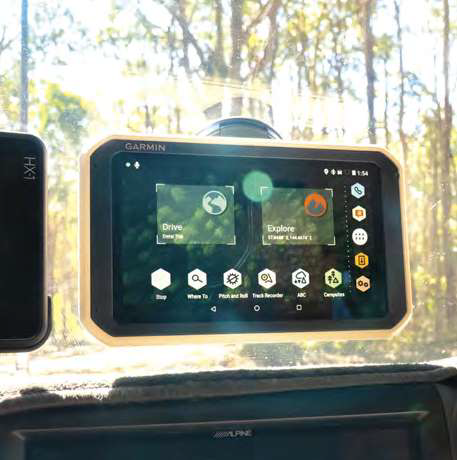
Track your travels with a GPS
Knowing where you are and where you’ve been is another essential when travelling. A GPS with remotearea mapping can help. If your GPS fails or runs out of power — which, if you have solar panels on your vehicle or rig and you’re in the desert, shouldn’t happen — have a backup in the form of a compass and a map to log your movements if you need to retrace your steps.
Any offroader familiar with soft sand will know that a long-handed shovel and a pair of traction boards, such as MATRAX, can be incredibly useful. Also, with the need to partially defl ate your tyres in these soft surfaces, you will need to consider bringing a pressure gauge and an air compressor to help pump them back up when you return to hard surfaces.
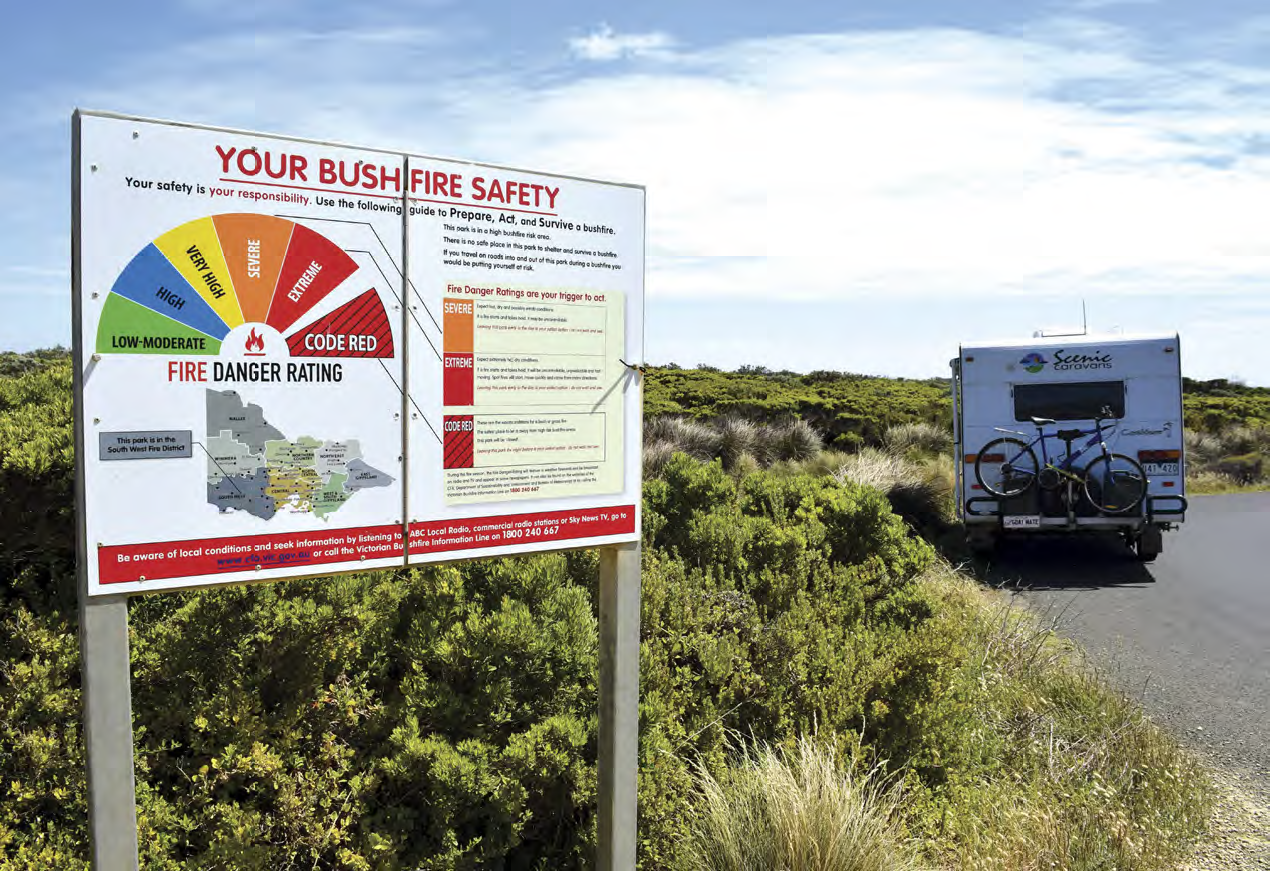
Research local conditions before you leave
You can’t go on any trip without bringing a medical kit and the knowledge of how to use it. This should be tailored to your personal needs, such as backups of personal medications, but it must include everything you would need to keep an injured or unwell person in a stable condition until proper medical help arrives. If you’re unsure of how to look after someone who’s injured, look into taking a course in First Aid. Some only take a day and can provide you the knowledge to save a life. If possible, those travelling with you should also have the knowledge too, as it is unlikely that a first aider can attend to their own injuries.
Consider making up a backpack survival kit for those longer trips. They are designed to get you through
72 hours and should contain energy dense food such as muesli bars, freeze-dried foods, water bottles, up-to- date maps, waterproof matches, a PLB, a fold-out shovel, and medical supplies. These are things that you hopefully won’t use while on your adventure, but it’s better to be safe than sorry.
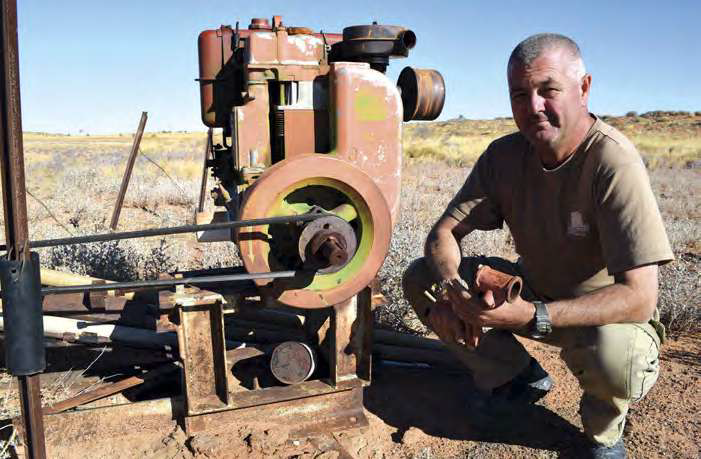
Preparation is the key to safety
WHEN DISASTER STRIKES
Sometimes all the precautions in the world won’t save you from something happening, which is when all your preparations will come into play. The number one rule, unless compromised by fire or other risks, is to not leave your vehicle. Too many tragedies happen when emergency services arrive, only to find the occupants have gone out to get help themselves, getting lost or into further trouble in the meantime. Vehicles are much easier to find than people. It’s almost always safest and smartest to stay put.
A smoke signal such as a fire, or digging out a large V in the dark hours when it’s not so hot, will attract the attention of emergency services if you do get stuck while travelling. Water should be your top priority as while the average person can last weeks without food, people can only survive a few days without water. You should have enough water to last you until rescue, but it’s also important to plan water collection sources before this supply runs out. For example, you can use a tarp or emergency thermal blanket to catch the morning dew or look around for greenery as green plants often indicate that a water source, potentially underground, is nearby. If you do happen to be struggling for water, resist the urge to eat a lot of food, as this requires water for digestion, possibly causing further dehydration.
Australia is known for its heat, so it’s critical to immediately consider shade if you’re in arid terrain. Try to wear baggy clothes and a broadbrimmed hat to keep yourself cool.
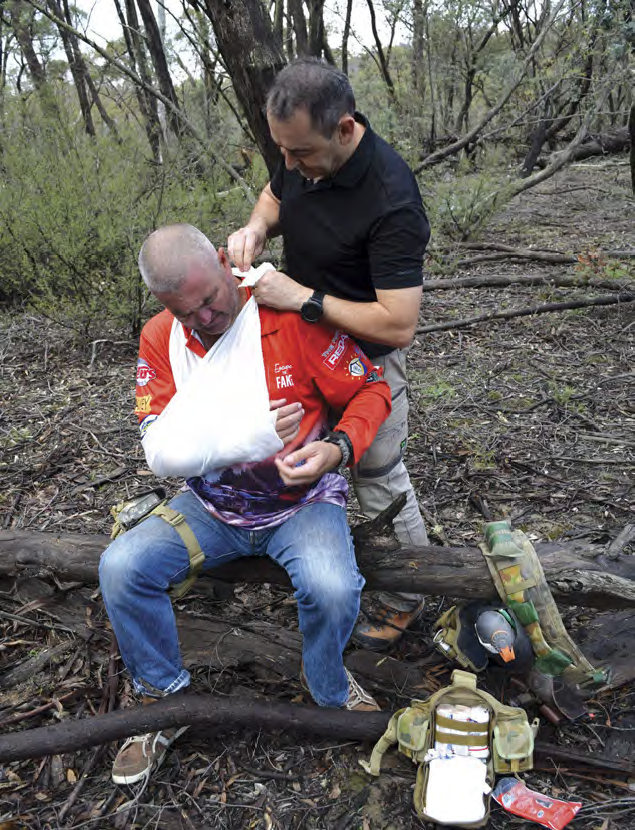
A course in First Aid is an excellent idea
SAFE TRAVELS
Don’t let the risks and dangers of Australia worry you too much. Offroad and remote travelling hold some of the greatest sights in this country. With the right preparation, you can be sure to make it back home safely with plenty of stories to tell.
If you see a fellow traveller in need, offer your help if it’s safe to do so, as the preparation you undertake may end up being used to rescue others.
It’s never too early to start planning the safety aspects of your next adventure!

Take care at river crossings
WHAT SHOULD YOUR MEDICAL KIT CONTAIN?
There are a wide variety of medical kits available that should be tailored
to your individual needs, but these items are a good starting point:
• Crepe bandages
• Triangle bandages
• Sports/skin tapes
• Band-Aids
• Gauze swabs
• Non-stick dressing pads
• Saline
• Sterile eye-pad
• Alcohol swabs
• Disposable gloves
• Thermal blanket
• Tweezers
• Small scissors
• Safety pins
• Notepad and pen
• Antiseptic cream
• Anti-rash cream
• Pain pills
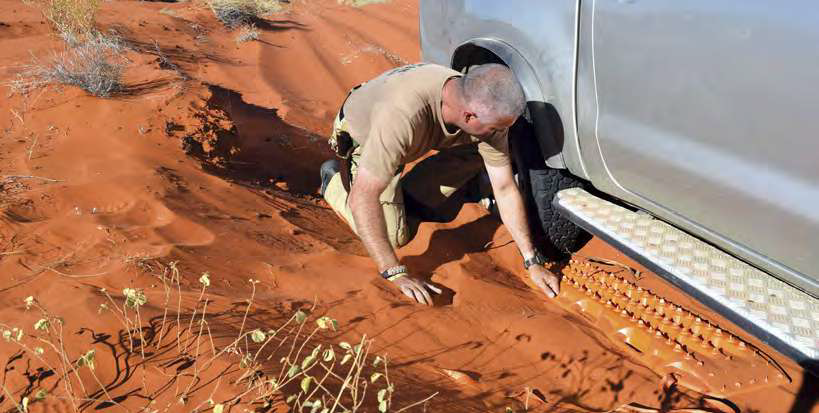
Sandy surfaces require lower tyre pressure
Water
If you run out of water while on your travels, contaminated water can make you extremely sick — which is the last thing you need if stranded. Sometimes access to clean water is limited and, other than using creative measures such as dew, you might need to supplement your water from underground or any water source you find along the way. A water filter such as the Katadyn Combi filter that packs into a 30cm bag, or the newest water filtration system from The Thirsty Nomad, will help take out any unwanted particles and strange tastes from the water to provide safe drinking water in your time of need.

Tyres can be burnt for signal fires
TOP SURVIVAL TIPS IF DISASTER STRIKES
• If you have a Personal Locator Beacon (PLB) activate it immediately.
• Try to contact emergency services using your phone and your UHF CB radio.
• Remain with your vehicle unless it is unsafe to do so.
• Conserve your energy. Don’t walk if you don’t know where you’re going.
• Try to find or create water sources. This can include a solar still — a container that gathers condensation on the inside from the heat and moisture outside.
• Hydrate as much as possible and if you do walk with the assistance of a map, move at night to conserve your hydration and energy.
• Have a mirror ready to signal for assistance or hang your mirror or lights from a tree or post.
• Build a fire if you have the means, as this will keep you warm at night and work as a signal to would-be rescuers. Tyres burn well in a desperate situation and release copious amounts of smoke.
Category: Features
Written: Sun 01 Aug 2021
Printed: August, 2021
Published By: